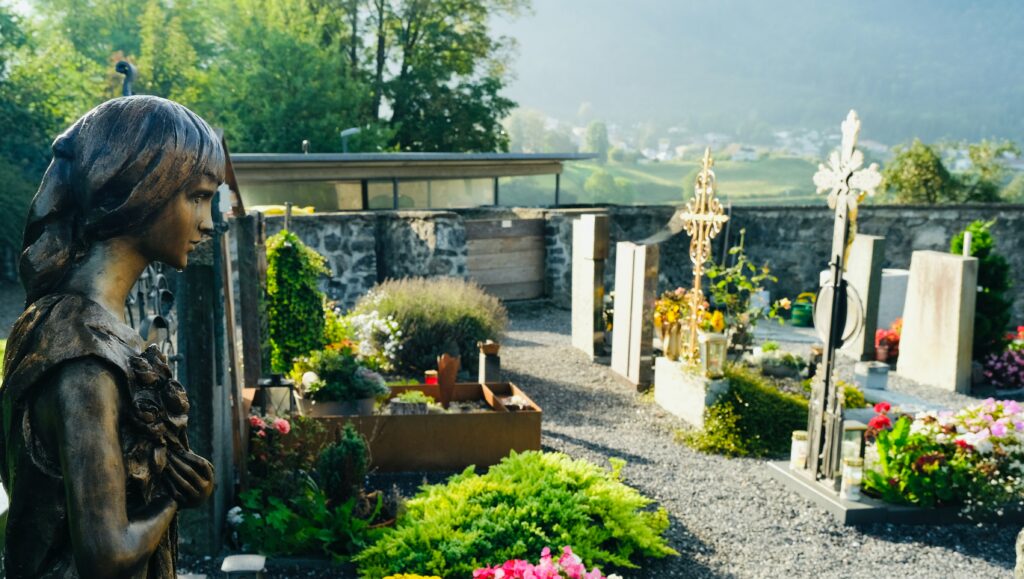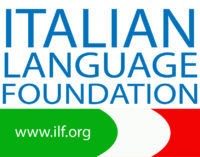
Written by Clara Vedovelli, a graduate student in Language Education from the Ca' Foscari University of Venice. She received her bachelor's degree from the University of Bologna in foreign languages and literatures. During her masters, she collaborated with the Ca' Foscari School for International Education and she interned at the Pedagogical University of Cracow as a tutor of Italian. Clara is aspiring to gain hands-on experience in a professional environment outside the classroom, and she is focusing on creating active engagement on the ILF's social media platforms. Being born in the Italian Alps, Clara enjoys hiking and spending time in nature.
Ognissanti is both a public and religious holiday celebrated in Italy on November 1st. Sometimes called Tutti i Santi, Ognissanti is a catholic solemnity celebrated in Italy and in other Christian countries to commemorate all the saints of the church. Ognissanti is followed by Giorno dei Morti (All Souls’ Day) on November 2nd.
Even though Ognissanti is traditionally a religious festivity celebrated on November 1st, in the last decades Italians started celebrating Halloween on the 31st of October. Halloween is not a proper tradition in Italy as it is in America, and it is usually considered “for kids” or for adults who want to go clubbing in scary costumes. But how could a pagan festivity such as Halloween be introduced in the religious Italian culture?
The English language and the Anglo-Saxon culture have played a major role in shaping the contemporary Italian culture. On the one hand, most of Italian kids born in the 90s or in the early 2000s grew up watching Disney Channel, Nickelodeon and overall, many American TV series and movies. They know what Halloween and Thanksgiving are without having experienced them themselves. On the other hand. Italian kids are usually taught British English and British traditions from primary school. The mixture of the two cultures, American and British, eventually ended up in a new Italian culture that looks up to the Anglo-Saxon influences.
As a kid, I remember watching the Halloween episode from some Disney Channel’s TV series and wandering how would it feel like to host a Halloween party at my place with all my friends dressed in crazy costumes. Even though my parents didn’t agree on the party, they let me trick-or-treat with my friends (Dolcetto o scherzetto). My grandma would sew a zombie costume for me and my brother, and she would help us carve a pumpkin and place a small candle inside. At school, we would read about Halloween traditions in England, and we would watch American Halloween movies at home. In spite of the strong overseas influences, Ognissanti tradition stands still.

What do Italians do on Ognissanti? We usually go home to be with family, and on November 2nd we pay our respects to departed relatives. However, because Ognissanti’s religious meaning is slowly fading away, many Italians take advantage of the ponte (long weekend) and take a couple of days off from school or work. We call it “Il ponte dei Morti” and many italians take a short vocation, and because of this plane tickets are usually more expensive in these days of the year. But traditions are hard to break, and traditions and traditional food are still relevant to Italians.

Religion is a core part of Italian cultural identity, especially for older generations. Ognissanti is traditionally considered a feast day and a day of prayer, therefore on November 1st it is common to go to Mass. On All Souls’ Day, Italians pray for their late relatives and visit the tombs of their loved ones bringing flowers. Chrysantemum is usually considered the flower of the month of November and, more specifically, the flower for All Souls’ day. It is often used as memorial flower to honor loved ones and is the flower of choice for placing on graves
Food is a core aspect of Italians’ cultural identity, too! There are some traditional dishes and sweets that we love to eat in this period of the year. One of them is “Pan di mort” (literally: deads’ bread, the name that you see here is dialect, the italian version of it would be “Pan dei morti“) and it is my absolute favorite both because of its taste and because it reminds me of my grandma. These typical All Saints’ Day food and is consumed almost in every region, but it is traditionally from the North, Toscana and Lombardia. Sometimes it is also called “Pane dei Santi”.

Traditional food changes from region to region and from city to city. It would be impossible to make a list of all the traditional food that Italians enjoy eating on All Saints’ and All Souls’ Day. The most famous sweets are the Papassini Sardi (from Sardinia), the Frutta di Martorana (from Sicily), the Ossa dei morti (literally: deads’ bones) and the Fave dei morti. If you want to impress your friends with a traditional Italian recipe, click here!
